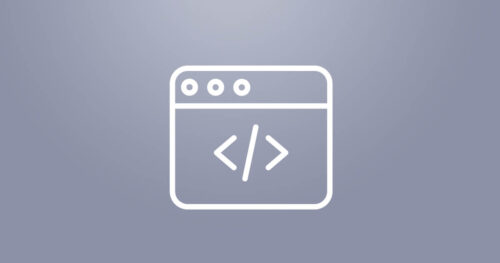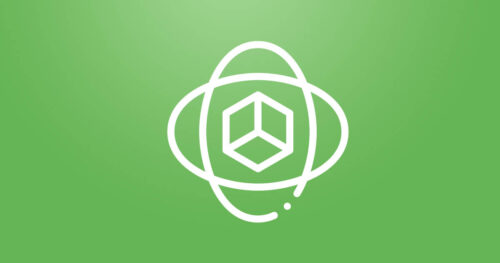Oracle Autonomous Database Workshop training course is designed for developers, administrators, architects and anyone who wants to learn about the first Autonomous Database in the market. In this course, you will be taught how to provision an Oracle Autonomous Database Cloud Service instance on Oracle Cloud that is suitable for your workload and requirements.
-
Learn to write well-tuned SQL statements for the Oracle database.
This Oracle Database course teaches you how to write well-tuned SQL statements appropriate for the Oracle database. This Oracle SQL Tuning for Developers Workshop will help you explore Oracle SQL statement tuning.
MySQL Cloud Service provides numerous benefits over an on-premise database. It is easy to create a cloud instance, with flexible options for computing power, memory, and storage. GUI tools are available for backup and restore as well as patching and rolling back. After completing this course, you can take advantage of those benefits to use MySQL Cloud Service to its best advantage.
-
The Oracle Database 19c: Data Warehousing Techniques course teaches you the various Data Warehousing concepts and techniques related to data extraction, transformation, and loading phases. You will learn about the different changed data capture methods for data refresh, and how to define summary management and implement materialized views. You will also learn about the role of warehouse metadata along with the various data warehouse implementation considerations.
-
The nature of leadership has changed over the period. The longstanding top-down, command & control leadership style is not successful in the current and adaptive work environment. These environments require a paradigm shift in leaders and their understanding of what constitutes effective leadership.
This set of Learning Outcomes focuses on developing leaders who are adaptive and agile in their leadership style.
Leaders learn to lead themselves first and create an environment that will allow agility to thrive. In this two-day Agile leadership training, participants learn why we need enterprise agility, the vital personal competencies to lead the transformation, and the organizational elements required to survive and thrive in today’s turbulent environment.
-
The ICP-CAT: Enterprise Agile Coaching is the second of two knowledge-based certifications on the Enterprise Agile Coaching Track. This certification focuses on the field of Enterprise Agile Coaching, explores the core elements of an agile transformation, and links the core enterprise coaching competencies in a way that empowers coaches to act as agents of change in organizations.
The Learning Outcomes also delve into the pursuit of professional mastery and Enterprise Agile Coaching’s ethical considerations. They then look at elements central to agile transitions, such as organizational and human change processes, transformation strategies, addressing organizational impediments, and communicating, educating, and facilitating enterprises. As an advanced path, most Enterprise Agile Coaching courses involve combining classroom learning and ongoing group discussions around practical experience in the field.
-
Oracle SOL Tuning for Developers Workshop course helps you learn how plans are tuned execution of Oracle SOL statements. You will learn how to write well-tuned SOL statements out of the box that are perfectly suited to Oracle DBMS.
-
This Oracle Database 12c: Analytic SQL for Data Warehousing training teaches you how to interpret the concept of a hierarchical query, create a tree-structured report, format hierarchical data and exclude branches from the tree structure. You’ll also learn to use regular expressions and sub-expressions to search for, match, and replace strings. In this course, you will be introduced to Oracle Business Intelligence Cloud Service.
Learn To:
- Use SQL with aggregation operators, SQL for Analysis and Reporting functions.
- Group and aggregate data using the ROLLUP and CUBE operators, the GROUPING function, Composite Columns and the concatenated Groupings.
- Analyze and report data using Ranking functions, the LAG/LEAD Functions and the PIVOT and UNPIVOT clauses.
- Perform advanced pattern matching.
- Use regular expressions to search for, match and replace strings.
- Gain an understanding of the Oracle Business Intelligence Cloud Service.
-
In the Oracle Database 12c R2: Advanced PL/SQL course, students learn how to use the advanced features of PL/SQL in order to design and tune PL/SQL to interface with the database and integrate with the other applications in the most efficient manner. They learn to write powerful PL/SQL programs using external C/Java routines, fine-grained access packages, cursors, extended interfaces and collections.
Learn To:
- Apply PL/SQL designing best practices.
- Create PL/SQL applications that use collections.
- Work with JSON data in the database.
- Implement a virtual private database with fine-grained access control.
- Write code to interface with external C and Java applications.
- Write code to interface with large objects and use SecureFile LOBs.
- Write and tune PL/SQL code effectively to maximize performance.
-
In the Oracle Database: SQL Tuning for Developers course, you learn about Oracle SQL tuning and how to apply tuning techniques to your SQL code. Learn the different ways in which data can be accessed efficiently. In this course, you will be introduced to Oracle Database Exadata Express Cloud Service.
Learn To:
- Use Oracle tools to identify inefficient SQL statements.
- Use Automatic SQL Tuning.
- Use Real Time SQL monitoring.
- Write more efficient SQL statements.
- Monitor and trace high load SQL statements.
- Manage optimizer statistics on database objects.
- Understand the optimizer process steps and operators.
- Interpret execution plans.
- Perform application tracing.
- Gain an understanding of the Oracle Database Exadata Express Cloud Service
-
The Oracle Database: SQL Workshop I Ed 3 course offers students an introduction to Oracle Database 12c database technology. The students are also introduced to Oracle Database Exadata Express Cloud Service. In this class students learn the concepts of relational databases and the powerful SQL programming language. This course provides the essential SQL skills that allow developers to write queries against single and multiple tables, manipulate data in tables, and create database objects.
Learn To:
- Identify what a SQL statement is.
- Understand the Oracle Relational Database.
- Use SQL Developer.
- Write reports using SQL Statements.
- Manipulate data in relational tables and save the data.
-
This course provides an overview of the Oracle Database 18c new features and enhancements related to Multitenant architecture, security, RMAN, general database areas, performance, data warehousing and Sharding.
Learn To:
- Use new features like Application PDB Fleet and PDB snapshots carousel of the Multitenant architecture.
- Understand new features like PDB keystores and encryption of sensitive data in Database Replay files of the Security.
- Benefit from new features like reuse of preplugin backups and duplication of active PDBs into an existing CDB of RMAN.
- Use new features like private temporary tables and online modification of partitioning and subpartitioning strategy of General Database.
- Configure and use new features like Automatic In-Memory Management in Performance.
- Manipulate new features like inline external tables and polymorphic table functions of the Data Warehousing.
- Understand enhancements like user-defined sharding method and support for PDBs as shards in Sharding.
-
This UNIX and Linux Essentials course is designed for users and administrators who are new to the Oracle Linux and Oracle Solaris operating systems. It will help you develop the basic UNIX skills needed to interact comfortably and confidently with the operating system.
Learn To:
- Manage files and directories from the command line and learn to use the vim editing tool.
- Perform remote connections and file transfers.
- Customize the user environment and use advanced shell features in shell scripts.
- Archive and compress files and directories.
- Understand and manage process control.
- View and modify file and directory permissions.
Benefits to You
Learn to work effectively with UNIX and Oracle Linux environments and master the fundamental administrative tasks for these operating systems. These are the first steps to ensuring fast, reliable, secure and easy to manage performance. Optimize database workloads, lower IT costs and deliver a higher quality of service by enabling consolidation onto Oracle Cloud or private clouds.
-
This Java Performance Tuning training teaches performance tuning concepts applicable to the Java programming language. Learn the conceptual background for Java garbage collection, how it applies to Java garbage collectors on the Hotspot JVM, and more.
This Java Performance Tuning training teaches performance tuning concepts applicable to the Java programming language. Expert Oracle University instructors will teach you how it applies to Java garbage collectors on the Hotspot JVM, including the G1 garbage collector.
Learn To:
- Monitor, profile and tune your Java applications.
- Use command line and visual tools to perform these tasks.
- Get hands on practice with Visual VM, Java Mission Control, Flight Recorder and the NetBeans IDE.
- Use these tools and techniques to analyze Java 7 and earlier JVMs.
- Effectively apply tools like Java Mission Control and Flight Recorder to your daily work.
Benefits to You:
Learn how Java garbage collection works and how it affects your applications. Learn how to select the appropriate garbage collector and performance goal for your applications. Finally, use the Mission Control and Java Flight Recorder tools to monitor and analyze your applications.
A Live Virtual Class (LVC) is exclusively for registered students; unregistered individuals may not view an LVC at any time. Registered students must view the class from the country listed in the registration form. Unauthorized recording, copying, or transmission of LVC content may not be made.
-
As organizations are facing new entrants in their respective markets, they need to stay competitive and release new and updated products on a regular basis. The DevOps Foundation course provides a baseline understanding of key DevOps terminology to ensure everyone is talking the same language and highlights the benefits of DevOps to support organizational success.
This DevOps Foundation training includes a baseline understanding of key DevOps terminologies, the latest thinking, principles, and practices from the DevOps community including real-world case studies from many high performing organizations that engage and inspire learners, leveraging multimedia and interactive exercises that bring the learning experience to life, including the Three Ways as highlighted in the PhoenixProject the latest from the State of DevOps report.
It is designed for a broad audience, enabling those on the business side to obtain an understanding of Kubernetes and Containers while those on the technical side will obtain an understanding as to the business value of DevOps to reduce cost, increase quality and enhance agility to support business objectives in support of digital transformation initiatives.
-
This course provides guidance into the Process Owner responsibilities so they can describe what they are doing as a process and provides the education needed to oversee the design, re-engineering and improvement of IT Service Management (ITSM) processes; particularly in the context of Agile Service Management. Participants learn how to apply Scrum practices to Process Owner responsibilities and use Agile and Lean principles and practices to put in place ‘just enough’ process and how to continually align process performance with overall business goals.
A process owner is an individual accountable for the performance of a process and for ensuring the process delivers value to its stakeholders. Process owners manage the requirements of process stakeholders, translate those requirements into process performance objectives, and oversee the entire process design and improvement life cycle.
-
The Introducing Cisco Cloud Consumer Security (SECICC) v1.0 course gives you a technical overview of basic concepts and components of the cloud, and the Cisco® solutions used to provide comprehensive security of your cloud-based environment. In this primarily lecture-based course, you’ll learn the basics from a cloud consumer perspective including securing cloud and software as a service (SaaS) application environments.
-
The main objective of this React training course is to help you become familiar with the process and gain the skills you’ll need to become a professional React developer. You will learn the fundamentals of React through self-paced and instructor-led training to understand and build React components and structure applications with Redux.
-
Functional toolkit to design state of the art web applications. This course is a great starting point for those who want to master this framework and make a career in designing web applications with Laravel. You will learn Laravel from scratch and build your own applications.
-
Angular certification course helps you understand the design of single-page applications and how Angular facilities their development. This Angular certification provides knowledge of concepts such as TypeScript, Bootstrap Grid System, dependency injections, SPA, forms, pipes, promises, observables, and Angular class testing.
-
The course provides core server-side Java web technologies. Covers topics on core java, JDBC Technology and Servlets. It then shows how JSP is built on the Servlet architecture. Additionally, the class shows how to use JSTL, custom tags and expression language to reduce Java code in web pages while adding tremendous power and capability to those pages. The class will provide hands-on practical skills based on actual project case study.
-
PostgreSQL is the most advanced open source database; it is globally accepted as an incredibly powerful tool for database management. PostgreSQL Administration & Development course offers you the information required to manage your live production database. It handles the administration and performance tuning of PostgreSQL databases. The candidates of PSQL training program are likely to learn the use of specialized PostgreSQL (AKA Postgres) modules such as replication, connection pooling, and full-text searching.
-
Our Sap Hana Training course will help you understand and learn the fundamentals and will also felicitate on training hands-on for the better grasp on the course. Further, we have the highly qualified professionals who will train you about Sap Hana Studio, Modeling, Security features and its various other aspects. This course is designed in such a way that it will make you understand ‘why sap Hana is a fundamentally different database engine.
-
Javafx Programming is intended for software engineers, systems analysts, program managers and user support personnel who wish to make beautiful UI using the Java programming language.
-
The ESOCMS02326: Artificial Intelligence and Machine Learning training course provides a detailed description about the technical and operational aspect of AI and ML and helps the learners to understand the concepts of AI, ML, neural network, reinforcement learning, NLP and artificial ecosystem. It also provides a detailed description about the need of AI ready infrastructure, AI and ML frameworks, implemented machine learning models, and use cases across the industry.
The offering is an engaging mix of key technologies, case examples, and business insights. The course includes recorded lab exercise demonstrations explaining the techniques of machine learning, neural network, reinforcement learning, and infrastructure in detail.
-
This two-day, hands-on EDU-VSANPD7: VMware vSAN: Plan and Deploy [V7] training course provides you with the knowledge, skills, and tools to plan and deploy a VMware vSAN™ cluster.
In this course, you are taught the many considerations that the end vSAN configuration has on the initial planning of the vSAN datastore. You also perform a fully manual configuration of a vSAN cluster.
-
Address security challenges by applying Red Hat Advanced Cluster Security for Kubernetes in an OpenShift cluster environment.
Customers want to learn how Red Hat Advanced Cluster Security for Kubernetes (RHACS) can help them solve their security challenges. However, their security teams might lack experience with Kubernetes and OpenShift, and so they have challenges with implementation. In particular, their security teams have several needs:
- Integrate RHACS with DevOps practices and know how to use it to automate DevSecOps, to enable their teams to operationalize and secure their supply chain, infrastructure, and workloads
- Assess compliance based on industry-standard benchmarks and get remediation guidance
- Apply vulnerability management, policy enforcement, and network segmentation to secure their workloads
RHACS customers might already be using external image registries and Security Information and Event Management (SIEM) tools. They need to integrate RHACS with their existing set of external components to achieve their security goals.
-
Red Hat Fuse, based on the Apache Camel project, is a lightweight, flexible integration platform that enables rapid integration of cloud-native applications, both on-premise and in the cloud.
Camel development is organized around:
- Routes that define a sequence or flow of processing.
- Processors that transform, interpret, and modify messages within a Camel route.
- Components that enable the creation of endpoints that interact with the outside world for acquiring and transmitting data.
The Cloud-native Integration with Red Hat Fuse (AD221) course emphasizes learning architectural patterns and implementing integration services based on Apache Camel and OpenShift. Camel and Red Hat Fuse enable developers to create complex integrations in a simple and maintainable format. You will learn how to use the most common integration components in Camel and develop, test, and deploy integration focused applications on OpenShift.
This Red Hat course is based on Red Hat Fuse 7.10 and OpenShift 4.
-
A developer introduction to building and managing containers with Podman for deploying applications on Red Hat OpenShift Container Platform.
Red Hat OpenShift Development I: Introduction to Containers with Podman (DO188) introduces students to building, running, and managing containers with Podman and Red Hat OpenShift. This course helps students build the core skills for developing containerized applications through hands-on experience. These skills can be applied using all versions of OpenShift, including Red Hat OpenShift on AWS (ROSA), Azure Red Hat OpenShift, and OpenShift Container Platform.
This course is based on Red Hat® Enterprise Linux® 8, Podman 4.2 and Red Hat OpenShift® 4.12.
-
Discover open practices for incremental process changes to assist in your DevOps transformation journey.
The TL250: Open Practices for your DevOps Journey course prepares a student to facilitate and participate in discovery, planning, and delivery of projects where DevOps transformation is desired.
At the end of this course, you will establish a toolbox of select practices and rethink your approach to cross-functional team projects. Utilizing new skills will enable your organization to effectively discover team purpose, align on project options, and deliver value that achieves target outcomes
-
Develop, scale, and troubleshoot event-driven microservice applications.
Learn to use Kafka and AMQ Streams to design, develop, and test event-driven applications. Event-driven microservices scale globally, store and stream process data, and provide low-latency feedback to customers. This course is for application developers and is based on Red Hat AMQ Streams 1.8 and Red Hat OpenShift Container Platform 4.6.
-
Control, manage, trace, monitor, and test your microservices with Red Hat OpenShift Service Mesh
Building Resilient Microservices with Istio and Red Hat OpenShift Service Mesh (DO328) teaches students installation, service monitoring, service management, and service resilience of Red Hat OpenShift® Service Mesh.
Openshift created an enterprise-ready, multi-tenant platform that made deploying and scaling microservice applications efficient and easily repeatable. But as these architectures become larger and more complex, defining how these services interact with each other becomes increasingly difficult. Red Hat OpenShift Service Mesh comprises 3 products—Istio, Jaeger, and Kiali—that facilitate service interaction management, provide service tracing, and create a visual representation of communication pathways.
This course is based on Red Hat OpenShift® Container Platform 4.4 and Red Hat OpenShift Service Mesh 1.1.
-
This TP362G: IBM Control Desk 7.6 Service Request Management Fundamentals course introduces you to the fundamental concepts of managing a Service Desk using IBM Control Desk. Through instructor-led discussion, demonstrations and hands-on labs, you learn how to create and resolve service requests, incidents and problems. You also learn to manage a service catalog, obtain user feedback through surveys, and generate reports.
-
This TN025G: IBM Tivoli Netcool OMNIbus 8.x Installation and Configuration course teaches you to perform a complete installation of IBM Tivoli Netcool/OMNIbus 8.1. Through lectures and extensive hands-on exercises, you learn all the steps necessary to perform an installation, including hardware sizing, confirming software prerequisites, installation, creation of ObjectServers, installation of probes, installation of gateways, configuring high availability, and deploying historical event reporting.
Throughout the course, you practice your knowledge through extensive hands-on exercises that emphasize the skills taught in the lectures. The lab environment for this course uses the Red Hat Linux platform.
-
This course is designed as the starting point for any technical specialist working with the InfoSphere MDM Virtual module. This course walks you through the major components of the InfoSphere MDM Virtual module, the data model, the matching engine and how customization can be implementated. You will learn how to invoke the InfoSphere MDM interactions and the various configuration and extension points of a service. The course is also used as an intro to various compoments that make up the MDM Architecture and prepares you to identify how the MDM will fit into their organization and what pieces may be customize to fit their business requirements.
This course has a heavy emphasis on the exercises, where you will deploy a new MDM configuration, invoke interactions, walk through the default matching algorithm, and create a custom handler and composite view.
At the end of this course, it is expected that you will feel comfortable implementating a new Virtual configuration data model, invoking interactions and creating customization to the Virtual MDM.
-
This course explores different options for customizing and extending the features of IBM Case Manager including developing widgets.
-
This course is also available as self-paced virtual (e-learning) course IBM MQ V9 Application Development (Windows Labs) (ZM513G). This option does not require any travel.
This course helps you develop the skills that are necessary to implement various application requirements on IBM MQ versions up to and including IBM MQ V9.0.2. It focuses on procedural application development for IBM MQ.
The course begins by describing IBM MQ and the effect of design and development choices in the IBM MQ environment. It then covers IBM MQ application programming topics such as methods of putting and getting messages, identifying code that creates queue manager affinities, working with transactions, and uses of the publish/subscribe messaging style.
Finally, the course describes the IBM MQ Light interface, introduces Advanced Message Queuing Protocol (AMQP), and explains how to set up an AMQP channel and how to interface with IBM MQ Light.
Hands-on exercises throughout the course reinforce the lecture material and give you experience with IBM MQ clients.










